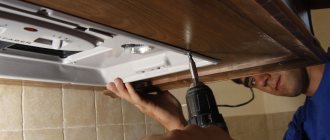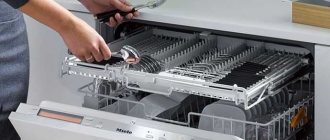Today, almost all electronic devices used in everyday life are equipped with remote controls. TVs are no exception. How else can you change channels without leaving the couch?
The television remote control, being an intensively used device, often fails. It either stops functioning altogether, or copes with its responsibilities partially.
What do some of us, the most impatient and comfortable of convenience, do when the TV remote doesn't work? That's right, they are trying to buy a new one as quickly as possible. But if you have the desire and a few tens of minutes of free time, you can try to repair it yourself.
In this article we will talk about why the remote control fails, and also consider ways to resuscitate it at home.
The TV remote control does not work: causes and symptoms of malfunction
The remote control device may lose its functionality either due to some technical problems or due to careless handling. So, if your TV remote control is broken, before you start disassembling it for subsequent repairs, you should determine for yourself what signs of a malfunction it is showing. This will make it easier to plan further actions.
Most often, a remote control malfunction is characterized by:
- visible and suspected mechanical damage;
- lack of response when pressing some buttons (other buttons work);
- complete lack of response (all buttons do not work).
Let's consider these signs in the context of possible malfunctions.
Mechanical damage
If the TV remote control does not work and there are obvious signs of mechanical damage on its body, this may indicate that it was simply dropped on the floor or deliberately tried to render it inoperative. The consequences of such treatment of the device may be:
- lack of contact between the batteries and the electrical terminals of the remote control;
- damage to the transmitting LED;
- violation of the integrity of conductive paths and/or leads of electrical components on the board.
TV malfunctions
There are a great many malfunctions in which the TV does not respond to the remote control and buttons on the body. The simplest is that the IR receiver is damaged. This may be a failure due to a manufacturing defect. There is a risk of damage to this sensitive element due to vibration and shock. The sensor can be burned by an intense flow of heat.
There are also software problems. Most often they are eliminated by flashing the TV. This can be done in the service. The most complex breakdowns are associated with hardware failure. This could be a microprocessor, a violation of the integrity of circuits due to the destruction of current-carrying paths and contact groups, cracks in the motherboard due to shocks or lightning passing inside the device case.
Here, users can only be given one piece of advice: it is necessary to carry out initial visual diagnostics with disassembling the device body only if you have the appropriate knowledge and skills. Otherwise, it is recommended to take the TV to a service center. An amateur’s independent actions can cause him even greater harm.
The TV remote control does not work: what to do and where to start
It is best to start diagnostics with the batteries. When a device falls, they are often the cause of its failure. The test itself consists of removing the remote control cover and checking the position of the batteries. If necessary, they must be reinstalled, observing the polarity. Pay attention to how tightly their contacts are in contact with the electrical terminals of the device. If the batteries are loose, you may need to bend the negative terminals (springs).
If after such events the TV remote control works, close the lid and continue to use it. If this does not happen, we move on to the next stage of diagnosis.
How to clean the TV remote control
We remove the batteries and unscrew all the screws, if any. Often the screws can be hidden under some stickers, rubber feet or in the battery compartment. Next, we hook up all the plastic latches in a circle. We act carefully, without violent actions - they are easily disrupted.
After removing the back cover of the remote control and getting to the insides, we remove the board. It can be held on by screws. If you look at the board, you can see wet marks on its surface. We will wash them.
Under the board there is a keyboard rubber band, which can be divided into two. The elastic band is also smeared with some vagueness, so we will wash that too.
The principle of operation of these buttons is very simple - there are two closed contacts on the board. These black patterns are the contacts. If you look closely, they look like scallops moving into each other.
On the elastic band, on the inside of the buttons, there are closing circles. When pressed, these circles close contacts on the board with each other. This is how the remote control recognizes the press and then transmits the command to the TV. The button will spring solely due to its shape and the fact that it is made of rubber.
Essentially, these buttons are of an open design and, as a result, any dirt between the board contacts and the closing pad inevitably leads to poor operation.
Battery charge
After removing the cover of the device to check the batteries, do not be too lazy to check their charge level. Although the remote control consumes a minimum of electricity to ensure its operation, the batteries gradually run out.
The test is best done using a conventional voltmeter or multimeter. To do this, you just need to measure the voltage at the contacts of the batteries. It should not be less than 1 V.
If you do not have such devices, you can check the batteries for the TV remote control by using them in another remote control device, for example for a DVD, stereo system, air conditioner, etc.
You can also insert known good batteries into our device. After making sure that they are suitable both in size and in terms of the output voltage, remove them from the other remote control and install them in the one being diagnosed. Did the check show that it was the batteries that failed? Just replace them.
Checking the functionality of the remote control
Most often, the reason that the TV does not turn on with the remote control lies in the remote control itself. If the remote control has not been dropped and there is no visible damage, it is worth checking the most obvious problems.
Batteries
As strange as it may sound, most often the remote control stops working due to the discharge of the power supply. This is exactly what the statistics of user requests to service centers says. Checking and replacing batteries is easy. To do this, you need to find the power compartment cover. It is usually located at the bottom, on the back of the case. The lid is snapped off by pressing on the corrugated area and sliding it in the direction of the arrow drawn on it. After this, you need to remove the old ones and install new batteries.
Another situation when the TV does not turn on with the remote control is the oxidation or weakening of the contacts in the power compartment. It's quite easy to check. After removing the cover, you need to move the batteries. If they dangle freely, you need to tighten the metal contact plate with a screwdriver.
All steel parts in the compartment are also inspected. If there is a lot of dirt and oxides on them, no power is supplied. In this case, naturally, the remote control does not see the TV. All oxides and dirt must be removed. This is done with an ear stick soaked in alcohol. If the corrosion process has gone too far, you will have to use a sharp metal object.
Light-emitting diode
Another reason why the TV stopped responding to the remote control is that the IR signal LED has broken or failed. It is impossible to check its operation with the naked eye. For this you will need a smartphone. The camera starts up on it, after which the remote control is directed at its lens.
If the remote control is working properly, when you press its buttons, the LED lights up and flashes will be visible on the smartphone screen . If this does not happen, the device requires repair. Users without the necessary skills are advised to take the device to a service center.
Incorrect signal frequency
Remote controls are not always thoroughly tested and calibrated at the manufacturer. If electronic components are defective, a situation may arise when the TV does not switch channels, it does not turn on and does not respond in any way to given commands. This occurs due to a strong mismatch in the frequencies of the transmitted signal.
Advice! The check is quite simple. You need to take a remote control for the same TV model or a compatible one if the manufacturer equips entire series of its products with the same remote controls. If everything works fine with the other remote control, then the standard one needs to be taken to the service center.
As practice shows, workshop specialists quickly determine the reasons for the frequency change and correctly configure the remote control. According to user reviews, a similar problem often occurs on TV brands LG and Sony. Among the inexpensive brands, Dexp can be noted.
The signal is weak
If the reception of the remote control signal is uncertain, the operating system of the TV may not recognize the command given and may not respond. At the same time, the case indicator blinks, but nothing happens. This problem is known and occurs on Samsung and Philips TVs. To restore connection with the remote control on the TV, simultaneously press the Program and Volume buttons (plus or minus, may differ for different models).
The same problem can occur on devices from other brands, for example, Sharp or Toshiba. Especially those with Smart TV. If pressing the specified combination of buttons does not help, you should update the device firmware . Most often, the operating system has a corresponding menu item for such an action.
Also, do not forget that the hardware solution of the remote control of individual brands is different. They have different transmitter power and LED installation location configuration. Therefore, you should not exceed the distance at which the remote control should be located from the TV. For some Philips models it is 5 meters. You can find out the specific value for your TV both experimentally and from the product’s operating instructions.
Interference
Interference affects both the signal transmission channel and the operation of transceiver devices. Their sources can be:
- microwaves;
- fluorescent lamps;
- halogen lamps;
- direct sunlight hitting the TV in the area where the IR receiver is located;
- ungrounded powerful equipment;
- warm and hot objects located close to the remote control, including the popular salt lamps.
The influence of interference is especially common in the kitchen. The user suddenly discovers that when the microwave or microwave oven is operating, the TV installed on the equipment does not turn off using the remote control and does not change channels. The solution to the problem is simple: the device must be rearranged.
Important! The operating instructions for the TV must indicate at what distance from heat sources and under what lighting conditions it should be installed. Following the instructions is the best way to prevent interference from affecting the operation of your electronic equipment.
Checking the LED
The transmitting LED plays a major role in the operation of the remote control. It consists of transmitting an infrared signal of a certain frequency to a special TV receiver. First, inspect the LED for damage. If it is broken, the only solution is to replace it. You will have to go to a radio market or a store that specializes in selling radio components, buy the same element and solder it in place of the damaged one.
Does the LED look intact? Check how it works. This is impossible to do with the naked eye, since the human eye does not perceive infrared radiation. One of the modern devices equipped with a camera will help here. It could be a mobile phone, smartphone, tablet, etc. Turn on the camera on it and point it at the remote control LED. Now try switching channels while looking at the device screen. With a working diode, you will definitely see light signals when you press the remote control keys. But if there is no reaction, most likely the problem is not with the light element.
What to do
Now you need to look for further malfunction and eliminate it with your own efforts.
Screen is locked
In custom settings, you need to disable all active modes that can block the screen.
First of all, you should make sure that the Philips TV does not respond to buttons from the remote control and on the case because the screen is blocked. This can occur as a result of activating the “Sleep”, “Energy Saving”, “Child Lock” modes, etc.
There are two ways to get rid of them:
- Disable mode. Deactivate it, and then enter the user settings and disable it so that it does not work next time.
- Reset settings. Set the factory settings, which is very convenient for those who are not familiar with the TV menu and are “afraid” of choosing the wrong settings.
After disabling the modes, perform a network restart of the Philips TV receiver, and then check whether it responds to the remote control.
Software Update
If the equipment still does not respond to commands and buttons.
You need to figure out the firmware:
- The software is out of date. Because of this, it is not supported by the developer and works crookedly. An update to the latest software version will be required.
Before updating, it is recommended to check that the current software version is up to date, because Perhaps the problem is not in the firmware. - Software glitch. The firmware could also crash due to incorrect user actions and a malicious application. If it is still working, then it is recommended to restore the current version.
How to flash a Philips TV - video instructions:
After installing the software, turn off and start the Philips TV, and then check how it responds to calling the menu. Usually, if there is a simultaneous refusal to press a button on both the remote control and the front panel, the problem is solved by changing the firmware.
Hardware failure
When a situation occurs that the Philips TV successfully responds to the body buttons, but does not perceive commands from the remote control, it simply has “nothing” to receive the signal. The radiation receiver is faulty and will need to be repaired.
You need to remove the cover of the equipment housing, and then check the board with the receiving component.
It's easy to spot:
- If there are several “lights” on the front of the case, one of them will be the receiver.
- For models with a single network light, it acts as both a current indicator and a signal receiver.
Having reached the board, it should be checked for a number of defects:
- Departed train. A common problem is when the TV is transported carelessly, resulting in no current flowing. The problem can be solved by a simple action - soldering the contacts to the boards.
- Destroyed contacts (tracks) on the board through which current flows to the receiving lens. Here it is enough to use soldering and “fill” the damaged area with material.
- Damaged lens. Due to the violation of its geometry, the radiation reaching the board is very weak and scattered. As a result of this, the Philips TV will respond to the remote control if only it is brought close to it. The solution is to replace the lens.
The board with the receiving lens does not have any transistors or capacitors, so it is not worth looking at individual parts on it.
The only thing worth mentioning is that the board could burn out as a result of a short circuit. But in this case, all the main hardware components of the equipment usually fail.
So that as a result of closing the contacts, only the board with the lens burns out, and the rest survives - this is rather an exception and the chances of this are close to zero.
If the user encounters exactly this, simply replace the board. A donor TV is suitable for this.
If a breakdown occurs solely with the remote control, you can buy a universal analogue or set up control from a mobile device. This is discussed in more detail in the topic “Line 17 in the table”.
You can see how to set up a universal remote control in the video instructions.
Damage inside the device
Mechanical damage may be hidden from your eyes. If the TV remote control falls and does not work, and something is loose inside, there is a possibility that it received a closed “trauma”, which put it out of action. As a result of a fall, a wire may break off, a lead, for example, of a capacitor may fall off, or a conductive path may crack. Here you will have to completely disassemble the device.
It is, of course, better to entrust the repair of remote controls that have been damaged to the board or its elements to professionals, but if you have ever held a soldering iron in your hands, you can try to deal with this yourself.
First, let's open the device. You're lucky if your TV remote control housing is held together with screws. In this case, you need to unscrew them and disconnect the parts of the device. If the case is fastened with internal latches, you will have to work a little.
A knife with a thin, dull blade will help you disconnect the parts of the remote control. It must be inserted between the halves and, gently squeezing, disconnect them from each other, passing in a circle. When this is done, disassemble the remote control and carefully inspect the circuit board for damage. For these purposes, use a magnifying glass. Small defects may not be visible to the naked eye. It is also advisable to ensure good lighting of the area where the inspection will be carried out.
Start checking from the terminals that go to the batteries. Next, inspect all the tracks, and then the electrical parts. If you find a break in the electrical circuit of the remote control, restore it by repairing or replacing the damaged part. If damage to the microcircuits is detected, it is better to buy a new remote control than to try to repair it. At least it will be cheaper this way.
When individual buttons do not work
Often the reason that the TV remote control does not work is the condition of the rubber keyboard. The lower part of the buttons is covered with a conductive graphite layer, which, in fact, closes the contacts located on the board. It happens that this layer wears out from constant use, and it also happens that dust, moisture, and foreign objects get between it and the contacts.
Wear usually occurs on the keys we use the most:
- on-off;
- switching channels;
- increasing or decreasing the volume level.
Diagnostics
If the TV does not respond to remote commands, this does not mean that it is faulty. The first step is to conduct a small diagnosis and specify the cause.
There can be only two of them:
- The equipment does not receive a signal;
- The TV receiver does not respond to the incoming signal.
There is a big difference between these two options, and what exactly happens in a particular case needs to be looked at using the remote control.
It may work or be faulty for a number of reasons, and a regular camera, even of low resolution, will help determine this.
Remote controller
You must first select a working button (some may fail), hold it down and at this moment take a picture of the emitter.
As a result, one of two results is possible:
- The shooting did not register anything. The TV remote control doesn't work. This could be dead batteries or serious damage. The solution to the problem can be found in the topic “Line 47 in the table”.
- The photo shows a “burning” emitter. This indicates that the remote control is working properly and you need to look for a breakdown in the TV itself.
TV
In the second case, you will still need to determine the nature of the breakdown, and the buttons on the Philips TV body will help with this.
You need to click on the menu, and depending on the result, take the following measures:
- The TV did not respond to the pressed button. Definitely software problems related to the firmware, which is the “weak” point of all Philips equipment.
- The screen displayed the menu being called up. There is a problem with the incoming signal, indicating a problem with the infrared receiver.
Unidentified oily liquid
Having discovered that the TV remote control does not work and disassembled it, you can see a colorless oily liquid on the bottom of the keyboard. Do not rush to blame your relatives if one of them spilled sunflower oil or sweet tea on the device. This liquid is nothing more than oil secreted from the pores of the fingers. During operation of the remote control, it settles on the buttons, as a result of which contact between them and the pads is lost.
This problem can be solved very simply. It is enough to disassemble the remote control, wipe the board and the bottom of the keyboard with alcohol, and the device will work like new. Before starting use after this procedure, do not forget to dry the wiped elements.
Is it possible to restore a worn out graphite layer?
What should I do if the conductive graphite layer on the bottom of the remote control keypad has worn off? It can be restored. Repairing remote controls with damaged conductive coating involves removing it and creating a new one in its place. But what is it made of?
There are two options here. The first is to buy a special kit for repairing remote controls at a radio parts store. This set includes a tube of silicone glue and several dozen rubber patches (coverings on the lower parts of the buttons) coated with the same graphite. You are required to disassemble the remote control, carefully cut off the old pads, and stick new ones in their place. Such repairs allow you to completely restore the device for a long time.
The second option does not involve any costs at all. Take regular chocolate foil, cut out the required number of pads from it, observing the size, and stick them on top of the worn-out patches. Of course, this budget repair will not ensure trouble-free operation of the remote control for many years, but believe me, it will still serve.
Will film help?
You've probably seen remote control devices wrapped in plastic film. This method was undoubtedly invented by our compatriots in order to protect the remote control from the possible consequences of careless handling. Yes, the film can temporarily protect the device from moisture and dust. But over time, it loses its protective properties due to the same intensive use. Whether it’s worth turning the remote control into an incomprehensible and funny object is up to you to decide.











